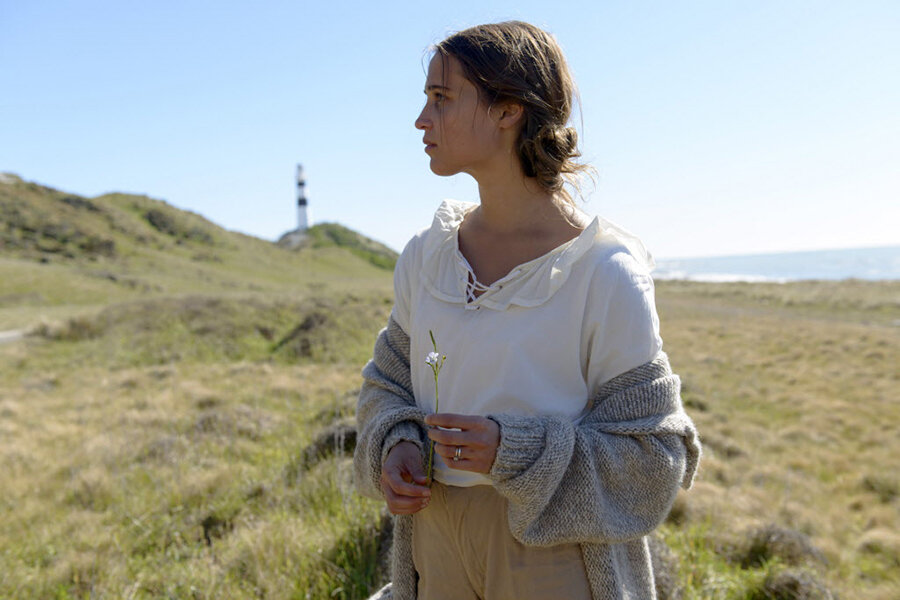'The Light Between Oceans' director Derek Cianfrance wanted to make 'a Cassavetes film on a David Lean landscape'
Loading...
Neither Michael Fassbender nor Alicia Vikander was especially keen on living at a remote New Zealand lighthouse for the duration of shooting Derek Cianfrance's 1920s period drama "The Light Between Oceans."
Cianfrance, the director of the gritty independent films "Blue Valentine" and "The Place Beyond the Pines," is known for leading actors to immersive extremes. To play a married couple in "Blue Valentine," Ryan Gosling and Michelle Williams lived in a Scranton, Penn., home together. Williams has said she often has to remind herself that she didn't actually marry Gosling.
For "The Light Between Oceans," adapted from M.L. Stedman's 2012 best-seller about a lighthouse keeper after World War I, Cianfrance wanted to keep his stars and small crew at their exotic location: Cape Campbell on the New Zealand coast, to double for the tale's Australian island. Fassbender and Vikander are both known for complete commitment to their roles, but neither is a method-acting nut.
"Run for the hills," Fassbender says was his initial reaction, humming the Iron Maiden song of the same name. "Initially I thought, 'Oh god, this is going to be hell: on this peninsula in the middle of the nowhere. It turned out to be a really unique experience, to be in such an extreme environment."
"They were, especially Fassbender, uncertain," says Cianfrance. "I'm like, 'Michael, just give me a shot here.' I had to work really hard to convince my production to stay out there. He was like, 'OK, I'll give it one night.' Flash forward five and a half weeks later and he didn't want to leave, and neither did Alicia."
They had other reasons for wanting to stay. Since shooting "The Light Between Oceans," which is now in theaters, more than a year ago, Vikander and Fassbender have been a couple: one of the movies' most decorated if discreet pairings. Both the film and their romance are, in part, a product of the blurring of fiction and reality.
"We had a chemistry from the beginning, obviously, and sort of to the present," says Fassbender, chuckling. "I just found her to be extremely committed and brave and really fierce. She goes for it. She doesn't let the fear of falling on her face stop her from trying things out."
The two came into the film having only briefly met. This was before Vikander exploded across movie screens last year, in films like "Ex Machina" and "The Danish Girl," for which she won an Oscar. A fan of Fassbender's for films like "Hunger" and "Fish Tank," Vikander says she considered him "one of the best actors of his generation."
"It's something when you get to work with an actor who immediately vindicates your faith," says Vikander. "He pushed me and I dared to do the same back. It was easy from the get-go. He kind of came in with open arms and was willing to really serve this story justice."
Fassbender plays a former soldier craving isolation after the war. He and Vikander's character, who lives in the nearest village, fall in love, but their union is haunted by miscarriage and later, a shared deceit. The stark, wind-swept beauty of the film's rugged, romantic location, along with cinematographer Adam Arkapaw's photography, gives the film a classical sweep new to Cianfrance's films.
"I make movies about family. I make movies about relationships. This one just has an epic backdrop," says the Brooklyn writer-director. "In some ways when I was shooting it, I was thinking of trying to make a Cassavetes film on a David Lean landscape."
Cianfrance eschews saying "action" or "cut" and instead has the actors improvise their way into and out of a scene. He would rouse the cast and crew for first light, or bring them back for the evening sun. They slept in trailers near the lighthouse. For Vikander's first day of shooting, before she arrived on set, he had her picked up at 2 a.m. and driven to the lighthouse. She was asked to cover her eyes until she was to exit a woodshed for her first take.
"I just looked out and saw this huge lighthouse, which is pretty extraordinary," Vikander recalls. "And the film crew was up on the top, so I started to climb up to the top. And they had timed it so the second I came up there, the sun just popped up over the horizon. It was probably the most extraordinary sunrise I had ever seen. It's not me acting, really, in the film when I see it."
The elements, Fassbender says, also made a powerful impression on him, particularly the relentless wind. And the removal from cellphones and other day-to-day pressures turned out to be welcome in focusing on the film's tender and tragic story.
"I'm a big part of superhero franchises and sci-fi franchises, but these are real people dealing with life and what life throws at you and how you handle it and how lives veer off a path that you thought they were destined for," says Fassbender. "That struck a chord with me personally."
"We actually had a true experience on that island. A lot of stuff made the film. A lot of stuff didn't," says Cianfrance. "But we were actually living there and the film witnesses the truth of our experience."







